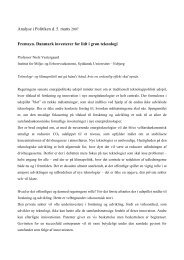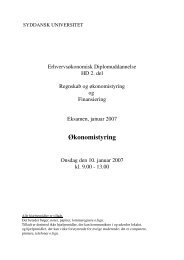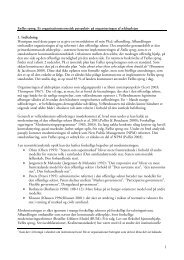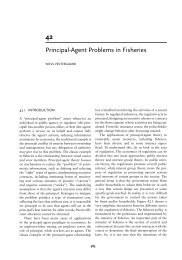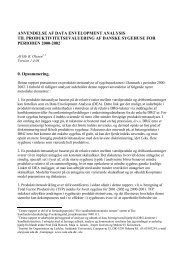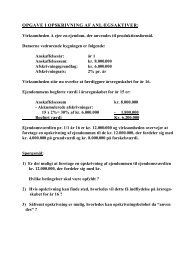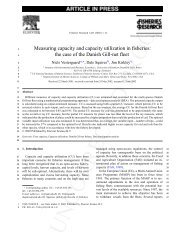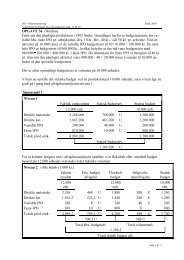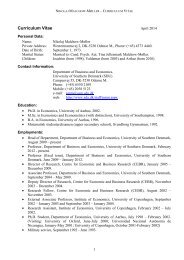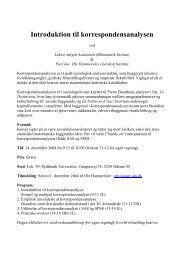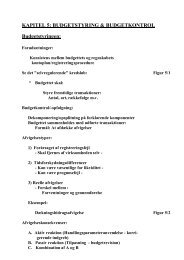Development of Parties and Party Systems in ... - lah@sam.sdu.dk
Development of Parties and Party Systems in ... - lah@sam.sdu.dk
Development of Parties and Party Systems in ... - lah@sam.sdu.dk
- No tags were found...
Create successful ePaper yourself
Turn your PDF publications into a flip-book with our unique Google optimized e-Paper software.
antipolitics <strong>and</strong> re<strong>in</strong>forcement <strong>of</strong> antidemocratic discourses could be observed, detrimental forconsolidation <strong>of</strong> the polical arena <strong>and</strong> the new-won democracy.1.4. Stages <strong>of</strong> party <strong>and</strong> party system developmentThat leads us to mapp<strong>in</strong>g out the different stages <strong>of</strong> party development. As noted above, parties <strong>in</strong>the CEECs were established <strong>in</strong> communist one-party-systems <strong>in</strong> crisis <strong>and</strong> decay. The first stage <strong>of</strong>post-communism was marked by extraord<strong>in</strong>ary politics, extrication, political craft<strong>in</strong>g <strong>and</strong> transitionanomie <strong>and</strong> functional as well as government overload. The parliaments almost became “lawmak<strong>in</strong>g mach<strong>in</strong>es”. The new political parties were embryonic ”s<strong>of</strong>a-parties” <strong>and</strong> proto-partiesmarked by <strong>in</strong>ternal splits <strong>and</strong> several veto-group factions. The ma<strong>in</strong> problem was to f<strong>in</strong>d newconstituencies <strong>and</strong> political issues on which to compete. Political strategists simply did not knowwhat the electorate would tolerate be way <strong>of</strong> hardship (Innes, 2002:88). Thus the dem<strong>and</strong> <strong>of</strong>political parties were difficult to derterm<strong>in</strong>e. As noted by Edmund Mokrzycki the new politicalleaders tended to base their calculations on simplified holistic <strong>and</strong> radical constructions <strong>and</strong>neoliberal utopia believ<strong>in</strong>g <strong>in</strong> a harmonic <strong>and</strong> natural order after <strong>in</strong> four decades hav<strong>in</strong>g beenharassed by marxist-len<strong>in</strong>ist propag<strong>and</strong>a 5 .Under the then prevail<strong>in</strong>g extraord<strong>in</strong>ary politics <strong>and</strong> transition anomie the party systems, that means<strong>in</strong>teraction between parties, were not sufficiently developed as <strong>in</strong>teraction mostly took place <strong>in</strong>sidethe party movements. Due to low party <strong>in</strong>stitutionalisation political entrepreneurship <strong>and</strong> politicalcraft<strong>in</strong>g played a prom<strong>in</strong>ent role. Most parties were forced to “look <strong>in</strong>wards”, secure higher<strong>in</strong>stitutionalization <strong>and</strong> elite-cohesion. There tended to be few strik<strong>in</strong>g differences between the partyprogrammes. The historical parties had to to organize themselves almost from scratch <strong>and</strong> wereforced to f<strong>in</strong>d a new identity <strong>and</strong> reach a ”compromise” between the past <strong>and</strong> the present, certa<strong>in</strong>lyno easy tasks.Figure 2: Stages <strong>of</strong> party developmentYear1989 new movement so-calledcatch all movement proto-parties“re-<strong>in</strong>vention” <strong>of</strong> old historical partiespost-communist successor parties1990 “wars <strong>in</strong> the top”5 Edmund Mokrzycki, “Kapitalizm Oswojony”, Gazeta Wyborcza 11-12 August, 2001:10.14



